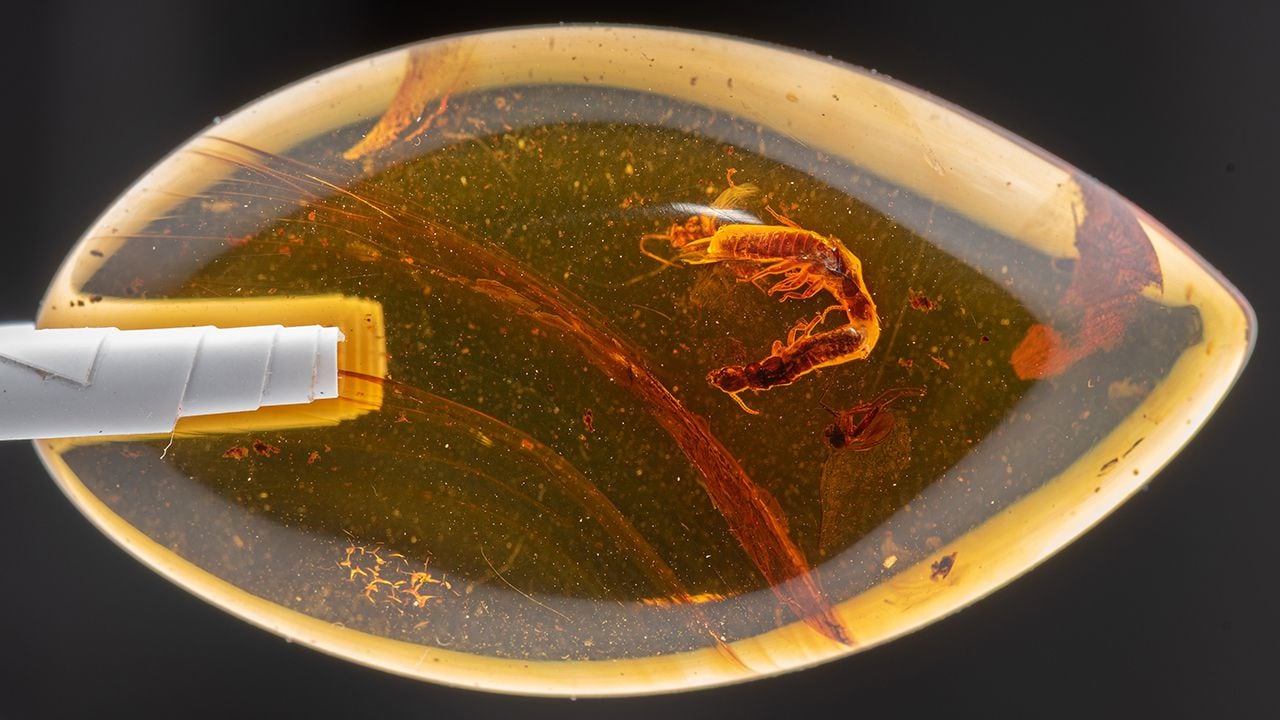Termites found frozen in amber while mating 38 million years ago
A pair of fossilized termites are proving that love can last forever — when frozen in amber — and that their extinct species got it on 38 million years ago roughly the same way as termites today, according to new research from a team including Auburn University Assistant Professor Nobuaki Mizumoto.
Mizumoto was part of an international team that studied the extremely rare fossil find of two insects encased in amber, in what appears to be a mating position.
The researchers believe the termites were doing what is called a tandem run — where two mating insects maintain head-to-abdomen contact while scouting a nest location — when they became trapped in tree sap, which hardened into amber over millions of years, preserving the insects inside.
While it’s not quite “Jurassic Park,” scientists can and do study the preserved remains of insects trapped in amber to learn more about prehistoric species.
Mizumoto said the find provides an unprecedented look into the behavior of this long-gone species, but may not be a perfect snapshot.
“Amber provides one of the most detailed and vivid records of extinct life,” Mizumoto said in a news release. “However, the process of fossilization may distort the true picture of past organisms and bias evidence.”
Researchers believed the process of being stuck in the amber may have shifted the positions of the encased termites, so they attempted to recreate the process in a lab with modern-day termites.
“We simulated the first stage of amber formation, the immobilization of captured organisms, by exposing living termite tandems to sticky surfaces,” Mizumoto said. “We found that the posture of the fossilized pair matches trapped tandems and differs from untrapped tandems. Thus, the fossilized pair likely is a tandem running pair, representing the first direct evidence of the mating behavior of extinct termites.”
The team’s findings were published Wednesday in Proceedings of the National Academy of Science, a leading peer-reviewed scientific journal.
The fossil is the only known occurrence of a pair of Electrotermes affinis, an extinct termite species, being captured together. It was originally found in a mine, in Kaliningrad, Russia.
The fossil came to the researchers’ attention after co-author Aleš Buček, the head of the Laboratory of Insect Symbiosis at the Czech Academy of Sciences, saw it listed for sale online. Realizing its value, Buček purchased the fossil and began the research. It is now housed at the National Museum, Prague in the Czech Republic.
Mizumoto began this research while at the Okinawa Institute of Science and Technology, where he worked prior to joining the faculty at Auburn in January. The team also included Simon Hellemans and Thomas Bourguignon at the Okinawa Institute of Science and Technology and Michael Engel from the American Museum of Natural History.
